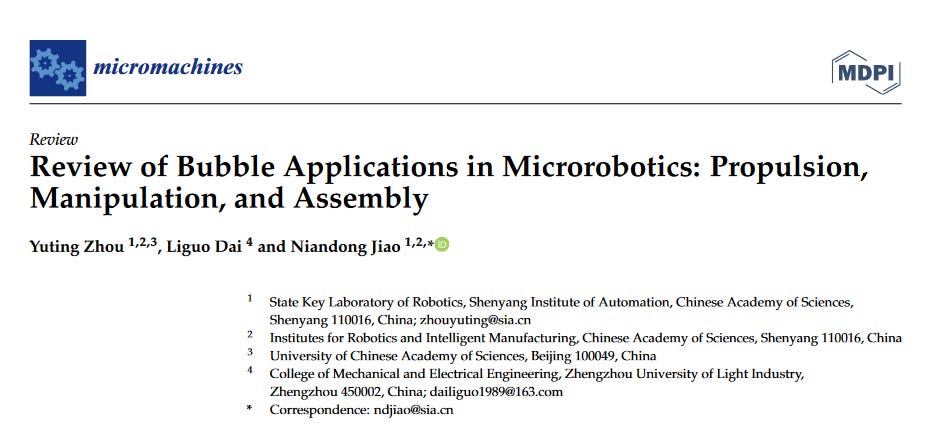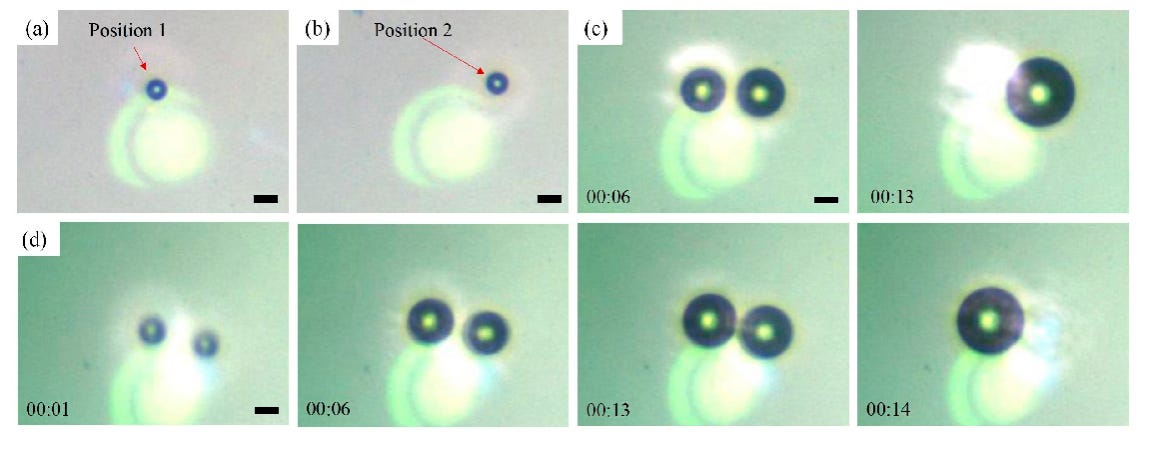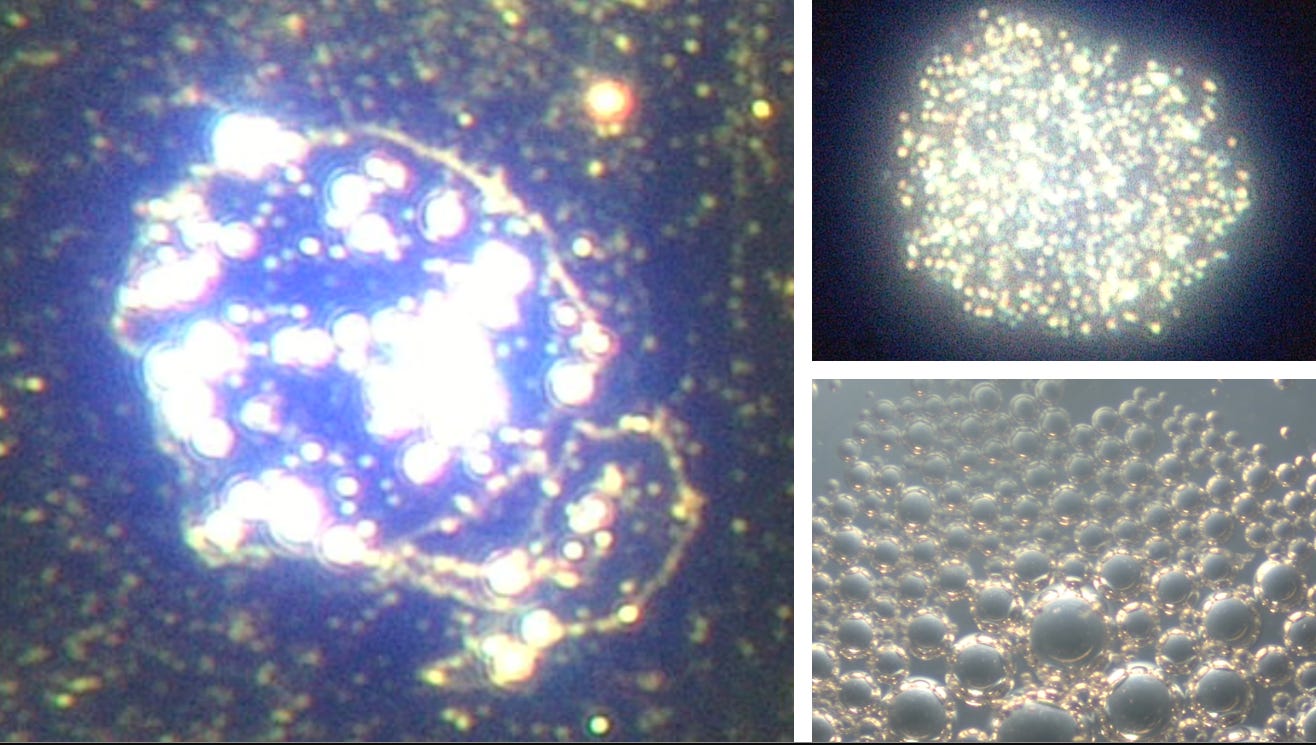Microbubbles Are Microrobots That Build Microchips

Correlation with COVID19 Microscopy Findings
Microbubbles seen all over the world in COVID19 vials, live blood, urine, mediations, supplements ARE microrobots that can self assemble microchips for biosensing and other application.
Ana Maria Mihalcea, MD, PhD | substack.com/@anamihalceamdphd

Review of Bubble Applications in Microrobotics: Propulsion, Manipulation, and Assembly
In recent years, microbubbles have been widely used in the field of microrobots due to their unique properties. Microbubbles can be easily produced and used as power sources or tools of microrobots, and the bubbles can even serve as microrobots themselves. As a power source, bubbles can propel microrobots to swim in liquid under low-Reynolds-number conditions. As a manipulation tool, microbubbles can act as the micromanipulators of microrobots, allowing them to operate upon particles, cells, and organisms.
We have seen around the world many images from the COVID19 vials that show these dark ringed bubbles. These are called microbubbles and they are microrobots. This is a further explanation that builds upon the recent review of the article
Here you can see a video of how these microrobots work:
This is another researach article that explains how the microbubbles work together for self assembly purposes.
Collaborative micromanipulation using multiple bubble microrobots in an open reservoir

These microrobots can be controlled via light emission:
Researchers Turn Bubbles Into Laser-Controlled Microrobots
Here is another example on how to manipulate them via light and temperature.
Three-Dimensional Manipulation of Micromodules Using Twin Optothermally Actuated Bubble Robots

This is an image captured from a Moderna COVID19 injection vial. We can see the elaborate nanopore structures that are connectin the bubbles.

Bivalent Moderna vaccine Batch 042H22A Medical Technologist
Here is another example from the urine sample of an injected person. Dr. Ruth Espuny shared these images in our recent interview where she has been focusing on these bubble robots and other findings from around the world. You can see her full presentation here:

The important thing is that these microbubbles can coagulate to perform biosensing applications - they create microchips.
Functionalization of microbubbles in a microfluidic chip for biosensing application
Below you can see how the microrobots within the bubbles as I have filmed the, create an accumulation of Mesogen microchips. The below images were captured by me from Pfizer BioNTech COVID19 injection.

Image: Pfizer BioNTech COVID19 injection. Left Mesogen Magnification 2000x, right upper mesogen 2000x. Right lower microbubbles. AM Medical
Below you can see the microbubbles and how they assemble the mesogens from shedding in COVID19 unvaccinated blood

Image: COVID19 unvaccinated blood. Left Microbubbles assemble mesogen. Magnification 400x Right upper large microbubble containing many smaller bubbles. Magnification 2000x Right lower fully assembled mesogen. Magnification 400x AM Medical
Here you can see how similar the microbubbles are to what I have captured in the COVID19 Pfizer BioNTech vials:

Image: ADVANCES IN THERAPEUTIC ULTRASOUND: HIFU & LIPUS Philippine Physics Journal
Here is another article that shows how the microbubble agglomerates create the microchip:
A Novel Microfluidic Chip for Assessing Dynamic Adhesion Behavior of Cell-Targeting Microbubbles

Here is a comparison to the COVID19 Pfizer BioNTech vials:

Image: Pfizer BioNTech COVID19 injection. Left microbubbles 2000x, right micrpubbles and some microchip development left upper corner 400x. AM Medical
You can see here how the microbots can self organize into diverse patterns. If you compare that to the Mesogens above, you can see exactly this pattern:
This is one of the many concerns with this technology - mind control applications.
Magnetic microbots can hook up brain cells to make a neural network
Tiny robots that can transport individual neurons and connect them to form active neural circuits could help us study brain disorders such as Alzheimer’s disease.
The robots, which were developed by Hongsoo Choi at the Daegu Gyeongbuk Institute of Science and Technology in South Korea and his colleagues, are 300 micrometres long and 95 micrometre wide. They are made from a polymer coated with nickel and titanium and their movement can be controlled with external magnetic fields.
Of course we know about all the metals that were found in the vials by many different scientists.
Summary:
Microbubbles seen all over the world in COVID19 vials, live blood, urine, mediations, supplements ARE microrobots that can self assemble microchips for biosensing and other application.
Original Article: https://anamihalceamdphd.substack.com/p/microbubbles-are-microrobots-that

Truthful comments that add value to our readers, such as additional information, clarification, validation or worthy rebuttal will be posted. The goal of comments on articles is to gain additional truth.

Comments ()